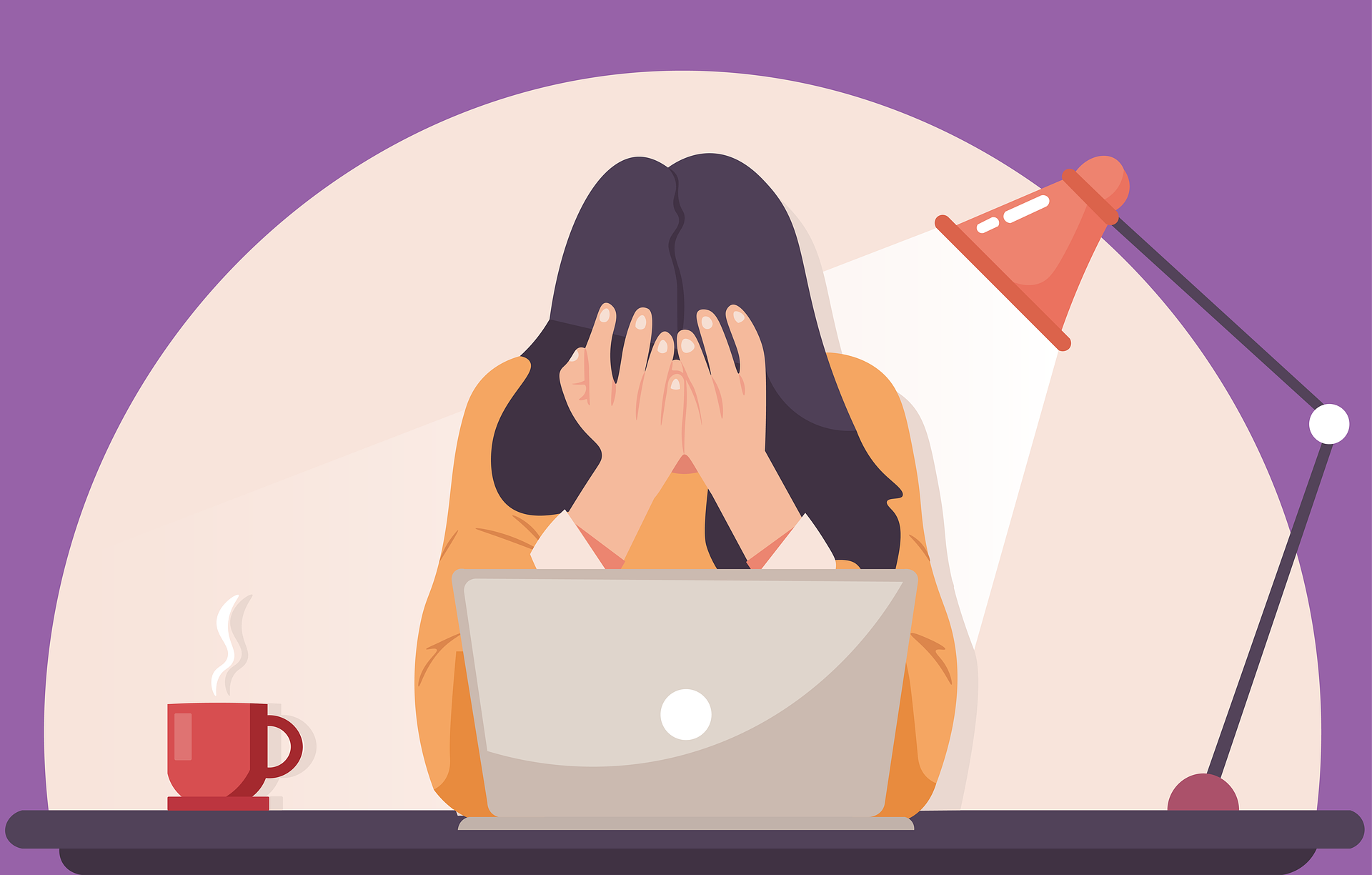In recent years, working from home has become the new normal for millions around the globe. While remote work brings flexibility, it also introduces unique challenges that can contribute to stress and burnout.
Juggling work responsibilities within the same space we live in often blurs boundaries, making it harder to switch off. To maintain both productivity and well-being, it’s essential to manage stress effectively.
Here, I will discuss eight scientifically supported methods to relieve work-from-home stress, helping you maintain a balanced, healthy remote work lifestyle. We also have a FAQ at the bottom of the page to answer any additional questions you may have.
1. Establishing a Dedicated Workspace
Creating a designated workspace can be a game-changer for reducing stress. This strategy helps differentiate work time from personal time, making it easier to “leave” work at the end of the day.

Why It Works:
- Boundaries and Focus: Research from the Harvard Business Review suggests that setting clear boundaries between work and personal life is crucial for mental health. A dedicated workspace signals to your brain that this area is for work, which can reduce distractions and increase focus.
- Improved Work-Life Balance: By designating a physical space for work, you avoid carrying work-related stress into personal areas of your home, which is critical for maintaining balance and relaxation.
Tips for Setting Up a Workspace:
- Choose a quiet corner or room away from household distractions.
- Use ergonomic furniture to reduce physical strain.
- Keep your space organized to prevent clutter-related stress.
2. Creating and Sticking to a Routine
Having a structured daily routine helps you stay on track and minimizes the anxiety of feeling “always on.”

Why It Works:
- Psychological Relief: According to the American Psychological Association, routines help provide a sense of predictability and control, which are both crucial for reducing anxiety.
- Reduced Decision Fatigue: Following a routine minimizes decision fatigue, allowing you to focus more energy on essential tasks.
How to Develop an Effective Routine:
- Start your day at the same time each morning and include a “commute” ritual, like a short walk, to signal the beginning of the workday.
- Schedule regular breaks, including a lunch break, to avoid burnout.
- End your day at a consistent time, signaling that work hours are over.
3. Practicing Mindfulness and Meditation
Mindfulness and meditation are proven techniques for reducing stress and promoting mental clarity, making them ideal tools for remote workers.
Why It Works:

- Stress Reduction: A study published in the journal Psychosomatic Medicine found that regular meditation reduces the production of stress hormones and improves resilience to stress.
- Increased Focus: Mindfulness practices train the brain to stay focused, enhancing productivity and reducing the tendency to get overwhelmed.
Easy Meditation Practices to Try:
- Use apps like Headspace or Calm for guided meditation sessions.
- Practice deep breathing exercises, such as the 4-7-8 technique, where you inhale for 4 seconds, hold for 7, and exhale for 8.
- Spend just 5-10 minutes daily on mindfulness; even short sessions can make a significant difference.
4. Regular Physical Activity
Exercise has countless benefits, both physical and mental, that can significantly lower stress levels associated with working from home.
Why It Works:

- Endorphin Release: Exercise triggers the release of endorphins, known as the body’s natural “feel-good” chemicals. According to the Mayo Clinic, this can counteract the impact of stress hormones.
- Improved Sleep and Energy Levels: Regular physical activity improves sleep quality and overall energy levels, both of which contribute to stress resilience.
Exercise Tips for Remote Workers:
- Try to include a mix of cardio, strength training, and flexibility exercises throughout the week.
- Take short breaks to stretch or do a few exercises like jumping jacks or push-ups during the workday.
- Aim for at least 30 minutes of exercise per day, even if it’s broken into shorter segments.
5. Connecting with Others
Social isolation can exacerbate work-from-home stress. Maintaining social connections, even virtually, is essential for emotional well-being.
Why It Works:

- Support Networks: According to the National Institute of Mental Health, having a support network helps reduce feelings of isolation and provides a buffer against stress.
- Mental Health Benefits: Socializing boosts levels of oxytocin, a hormone that combats stress and promotes a sense of connection and relaxation.
Ways to Stay Connected:
- Schedule regular video calls with colleagues or friends.
- Participate in online communities related to your field to stay engaged.
- Consider virtual “water cooler” breaks where you can chat informally with coworkers.
6. Setting Boundaries for Work Hours
Without clear boundaries, the line between work and personal time can blur, leading to burnout. Setting strict work hours helps maintain a healthy balance.
Why It Works:

- Prevention of Burnout: The World Health Organization identifies burnout as a syndrome caused by chronic workplace stress. Setting boundaries ensures that work doesn’t bleed into personal time, reducing this risk.
- Enhanced Productivity: Clear boundaries also increase productivity because you can focus on tasks during designated work hours without distractions.
Tips for Boundary Setting:
- Communicate your work hours to colleagues and family members.
- Use “Do Not Disturb” settings on work devices outside work hours.
- Avoid checking work emails or messages after your workday ends.
7. Practicing Deep Breathing Techniques
Deep breathing exercises are quick and effective ways to combat stress, and they can be done right at your desk. By activating the body’s relaxation response, deep breathing can help reduce tension and improve focus.
Why It Works:

- Physiological Impact: According to the American Institute of Stress, deep breathing reduces the body’s “fight or flight” response, decreasing cortisol levels (a primary stress hormone) and heart rate, both of which contribute to relaxation.
- Improved Mental Clarity: Slow, controlled breathing increases oxygen flow to the brain, which can help clear the mind and promote a sense of calm.
Simple Breathing Techniques to Try:
- 4-7-8 Technique: Inhale deeply for 4 seconds, hold the breath for 7 seconds, and exhale slowly for 8 seconds. Repeat 4-5 times.
- Box Breathing (4-4-4-4): Inhale for a count of 4, hold for 4, exhale for 4, and hold the breath again for 4. This technique is favored by athletes and military personnel for calming nerves and focusing the mind.
- Diaphragmatic Breathing: Breathe deeply into your belly rather than your chest, which helps engage the body’s relaxation response.
8. Taking Regular Breaks and Micro-Breaks
One of the benefits of remote work is the flexibility to take breaks as needed. Taking short, intentional breaks during the day can reduce stress and improve productivity.
Why It Works:

- Stress Reduction: Research from the University of Illinois shows that regular breaks can enhance concentration and prevent mental fatigue.
- Physical Benefits: Standing up and moving around during breaks helps reduce physical strain associated with prolonged sitting.
Effective Break Ideas:
- Follow the Pomodoro Technique (25 minutes of focused work, followed by a 5-minute break).
- Use breaks to stretch, take a quick walk, or have a healthy snack.
- Consider “micro-breaks” of just 1-2 minutes to breathe deeply or reset between tasks.
FAQs
1. How can I set up an effective home office to reduce stress?
Choose a quiet, comfortable space, use ergonomic furniture, and organize your workspace to reduce distractions and keep work separate from personal life.
2. Does physical exercise really help reduce stress from remote work?
Yes, exercise releases endorphins, boosts energy, and enhances focus, all of which help reduce stress. Even a short workout can be beneficial.
3. How can I keep a work-life balance while working from home?
Establish boundaries by setting dedicated work hours, having a designated workspace, and sticking to a daily routine to create separation between work and personal life.
4. Why is social connection important when working remotely?
Socializing reduces feelings of isolation, boosts oxytocin levels, and helps build support networks that provide emotional resilience against stress.
5. How does deep breathing help reduce stress?
Deep breathing activates the body’s relaxation response, lowering cortisol levels and calming the mind, which significantly helps in managing stress.



